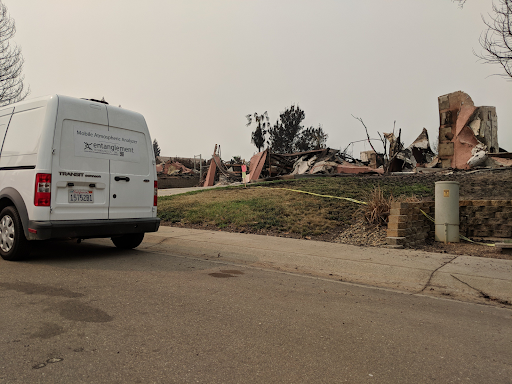
In-Field Monitoring of Air and Drinking Water after Wildfires
Case Studies
02nd Feb 2022
The summer and fall of 2018 saw multiple devastating wildfires in California, including the Camp Fire, which was the deadliest wildfire in the United States since 1918. Entanglement Technologies was honored to help cities during the recovery of these disasters by testing for benzene contamination of municipal drinking water supplies. We provided data collection and analysis for the most devastated areas of Redding (in particular the areas hit by the “fire tornado”) and are part of the selected proposal to help the City of Paradise rebuild after the disaster.
For these deployments, an AROMA instrument was fitted with a direct sparge front end, allowing the outstanding analytical capabilities to apply directly to water-borne contaminants. The robustness and sensitivity of the AROMA analytical method enables results with no degradation in performance under these saturated water vapor conditions. With method detection limits below 100 ng/L for many high risk contaminants, AROMA’s 10 minute, full-spectrum analysis time provides rapid screening results over large areas. This flexibility allows the same AROMA instrument to provide multimedia analysis with the same excellent sensitivity, accuracy, precision, and selectivity as during atmospheric analysis.

In addition, an AROMA instrument detected the significant chemical pollution generated by the Camp Fire and blown 155 miles to our facility in the San Francisco Bay Area. This analyzer was operating in base station mode (operating 24/7, unattended, and producing 120 measurements per day). During this event, concentrations spiked to the highest levels observed at our facility and remained an order of magnitude higher than typical concentrations for nearly 10 days, until changing weather and wind patterns transported the smoke and pollution plume away from the Bay Area.